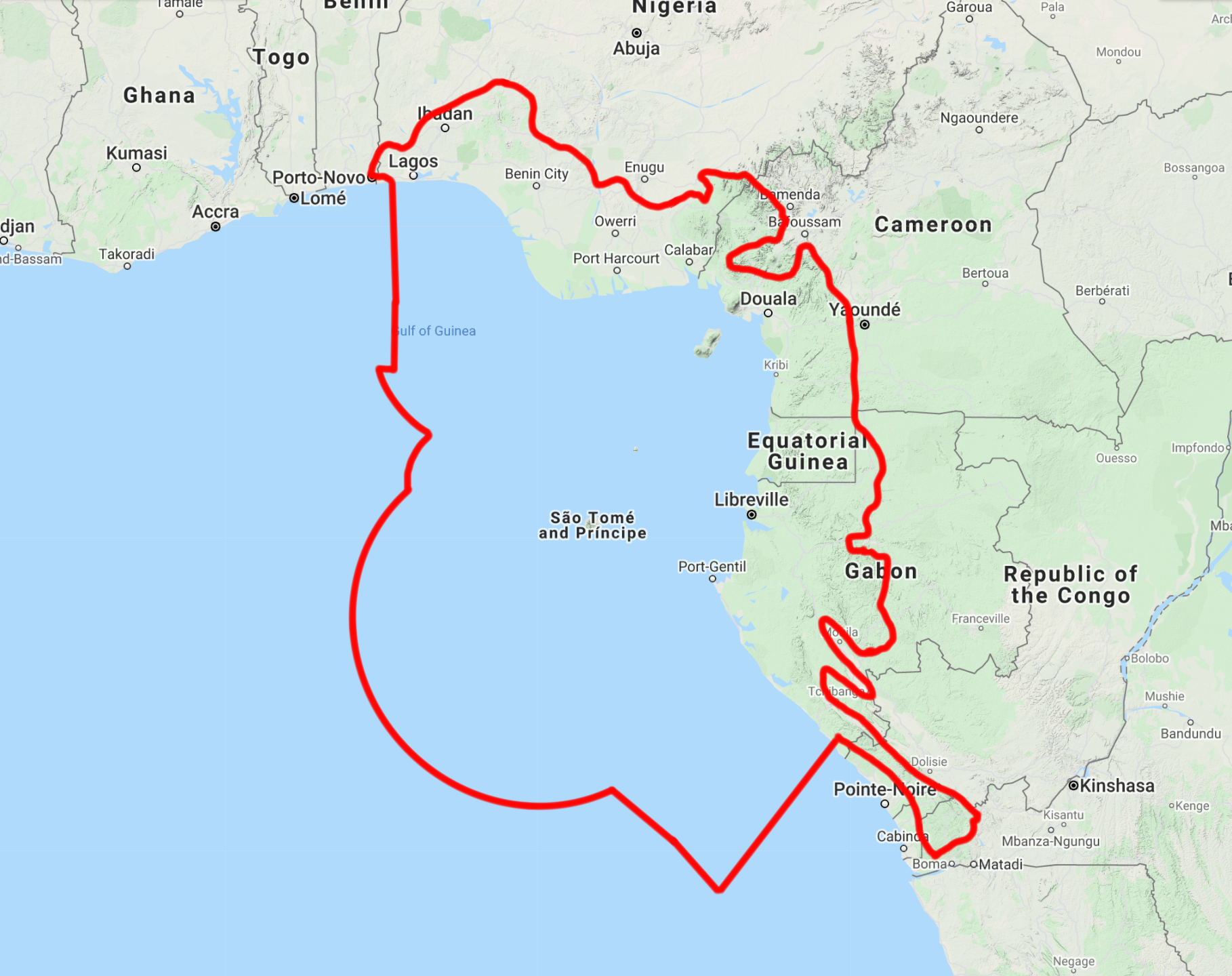How crested chameleons amazingly change color to communicate
Our “Species of the Week” series highlights the flagship species of each of the 844 unique ecoregions contained within Earth’s bioregions.
A fly buzzing through the lush tropical forest of Nigeria is as quickly seen as it is unseen. A long, goopy tongue has snatched the insect out of mid-air and recoiled back into the jaws of the crested chameleon, completely still, except for its slow swallow. This species is only found in the broadleaf jungles that border the Gulf of Guinea and stretch deep into the heart of Africa. They are most notable for their default skin tone of mustard or green with burnt orange highlights, accented with purple dots. Like all in their family Chamaeleonidae, they can change their skin color, have specialized tongues, and with uniquely evolved feet, move in a particular rhythm for survival.

Crested chameleons are the flagship species of the Cross-Niger Transition Forests ecoregion, located in the Gulf of Guinea Coastal Forests Mangroves bioregion (AT17).
Female crested chameleons are slightly larger than their male counterparts, measuring an average of 28 cm long (11 in) compared to 25 cm (9.8 in). The males, however, make up for it by having bolder patterns and more vibrant skin. For a long time, it was thought that chameleons change their skin tone to match their background, now it is proven to be an effective form of communication. In 2015, scientists discovered that the superficial layer of chameleon skin has pigments in it, and underneath are cells with small iguanian crystals. By tuning the spacing between these crystals, chameleons alter the wavelengths of light being reflected and therefore change the hue of their skin.
As insectivores, crested chameleons prey on any unlucky insect that flies in their path. Just as an archer pulls back the string of a bow, they contract the muscles in their tongue and then release, projecting forward and snatching their prey. This phenomenon is called elastic recoil and allows the average chameleon’s tongue to grow to twice the length of its body. These large tongues make crested chameleons an integral part of their ecosystem. With no-stop aerial attacks, they act as natural pest control in a region known for swarms.
Unlike most species of chameleons which live high in the treetops, crested chameleons mostly habitat in the forest undergrowth. With pincer-like feet, they grip twigs and branches to slowly move about the jungle floor. All chameleons have adapted a particular swaying gait. With each step forward, they do a small rock back like someone has hit a rewind button or dropped a beat. This is to mimic a leaf or branch blowing in the wind to avoid predators.
Colors of both genders become most vibrant around mating, with the crest, or back ridge of the crested chameleon the most prominent. Clutches between 11 and 14 eggs are laid at a time. Although listed as Least Concern on the IUCN Red List, crested chameleons are threatened by high levels of deforestation occurring in their range. Cultivation, intensive logging, and bush burning have been shown to destroy local crested chameleon populations.
Interested in learning more about the incredible species in the Afrotropic bioregions? Use the One Earth Navigator to explore the bioregions of the world.
Launch Bioregion Navigator-CC-Bernard%20Dupont-2005.jpg?auto=compress%2Cformat&w=1440)


